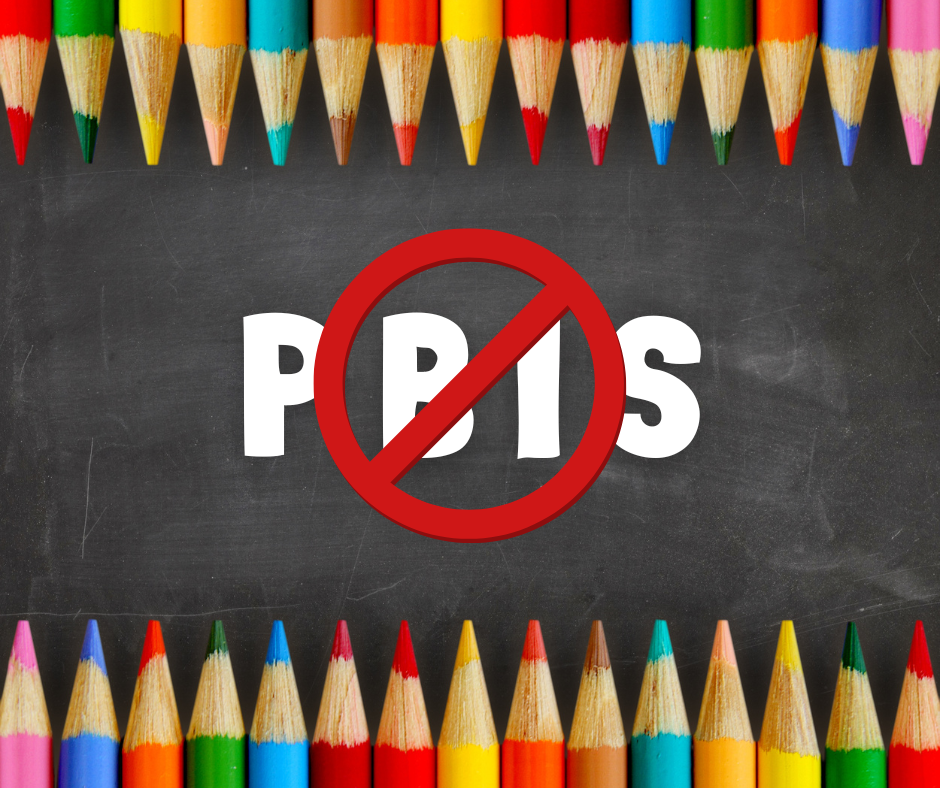PBIS Isn’t the Problem — How We’re Using It Is
So, I’ll start this post by saying: this might be an unpopular opinion.
I don’t hate PBIS.
There, I said it.
In fact, some of the strategies I teach do align with parts of PBIS — especially the idea of highlighting when a student is doing something right. I’m not talking about showering them with praise for raising their hand or handing out a lollipop the size of their head every time they stay in their seat. I mean a simple acknowledgment:
“Hey, I saw you did something that was hard for you, and I’m proud of you for doing it. You should be proud of yourself.”
That moment of recognition matters. Because the truth is — positive feedback is something both adults and kids crave.
I learned that lesson firsthand early in my career. I once worked for a principal who noticed the good things I did. He’d tell me, “You handled that situation really well,” or “I trust your judgment on this.” It made me want to keep improving because I felt seen. Then there was another principal… let’s just say she didn’t operate the same way. When I left her school and told her in my exit interview that I never felt like I did anything right, she replied, “Well that sounds like a you problem, doesn’t it?” (Spoiler alert: it wasn’t, and I didn’t look back.)
The point is: we need to feel seen — and that’s something PBIS got right.
When PBIS first hit the scene in the late 90s and early 2000s, I was just starting my teaching journey. The idea of a tiered system to address behaviors reminded me of RTI for academics, and I loved it. A structured approach that focused on clear expectations, data-driven decisions, and intentional support for teachers and students? Sign me up.
I believed in it because, as a rule follower myself, I always noticed that the kids doing the wrong thing got most of the attention. PBIS promised to balance that — to make sure the kids doing the right thing weren’t forgotten.
But somewhere along the way, the education system failed PBIS.
Schools started picking and choosing pieces of the model. Tier 1 systems went up on posters, but Tier 2 and Tier 3 supports were never built out. The staff didn’t have the training or the capacity, and the model slowly morphed into something PBIS was never meant to be.
It became the “only praise, no consequences” system. The kind where a student misbehaves, gets sent out of class, and comes back five minutes later with a lollipop and a pat on the head:
“Don’t do that again, okay?”
That is not PBIS.
And it’s definitely not what we do at Education Advisors.
While PBIS and our work at EA share some surface similarities — like being proactive and focusing on what’s going right — our framework is not PBIS. We take a functional approach to behavior, helping educators understand why behaviors occur, how to address them before they escalate, and how to shape them over time through consistent, practical strategies.
So, what if we got back to what PBIS was meant to be and added what it’s missing?
What if we created environments where students know exactly what’s expected of them — in the classroom, the hallway, the cafeteria — and are acknowledged when they meet those expectations?
And what if we also held them accountable when they didn’t?
Didn’t clean up after the art project? Next time, you use your own materials until you can show responsibility.
Threw a chair? You’ll need to demonstrate safe behavior before returning to group seating.
Not as punishment — but as teaching. Because behaviors, just like academics, can be taught, reinforced, and shaped over time.
Over 17 years in education, teaching my fair share of “spicy nuggets,” I’ve learned this: being proactive in behavior management gives you room to highlight the good while still following through with the necessary consequences.
In my classroom, Tier 1 supports were universal — clear expectations, positive reinforcement, and consistent routines. But when one of my frequent flyers started missing Fun Friday a few weeks in a row, that was my cue to roll out Tier 2 strategies: a simple point sheet, a couple of daily check-ins, and some extra accountability. And guess what? Most of the time, that student earned Fun Friday back.
That’s the beauty of a structured, intentional system — it’s not about rewards or punishments; it’s about growth.
At Education Advisors, we’ve built our own Behavior Change Pyramid — a 3-step framework designed to help educators move from reaction to prevention. It combines proactive classroom practices, function-based interventions, and consistent follow-through so students (and teachers!) can thrive.
We’re not PBIS — and that’s the point.
Our approach takes the best of what PBIS aimed to do and fills in the missing pieces to make it work in today’s classrooms — for all students, including our neurodiverse learners and those with higher behavioral needs.
PBIS isn’t broken. But it’s incomplete.
At Education Advisors, we help schools build the systems, skills, and supports that make it complete — with real strategies, not sticker charts.
Learn more about our strategies for behavior change at www.educationadvisors.biz, or connect with us on Instagram, Facebook, or LinkedIn.
Let’s move beyond buzzwords — and get back to what behavior support was meant to be: proactive, positive, and powerful.

